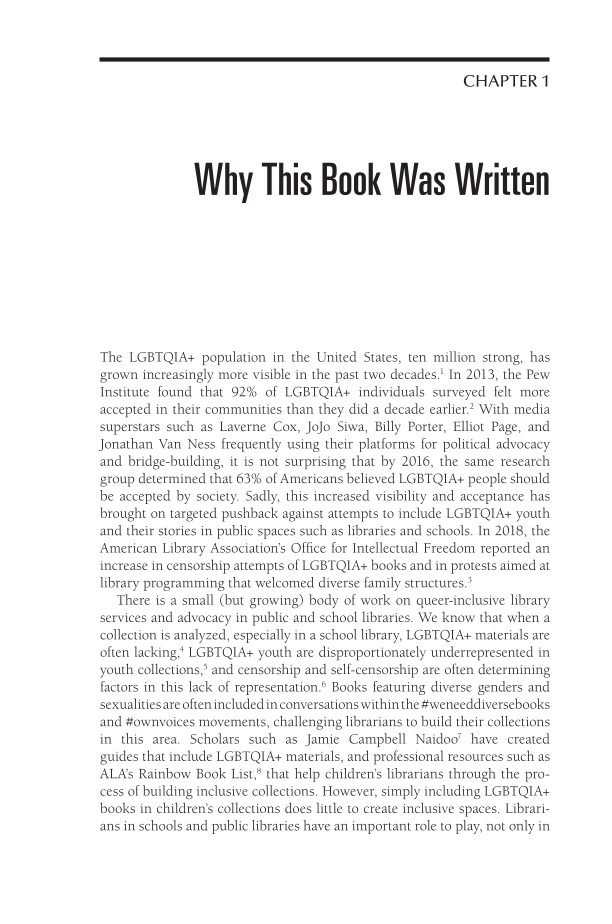CHAPTER 1 Why This Book Was Written The LGBTQIA+ population in the United States, ten million strong, has grown increasingly more visible in the past two decades.1 In 2013, the Pew Institute found that 92% of LGBTQIA+ individuals surveyed felt more accepted in their communities than they did a decade earlier.2 With media superstars such as Laverne Cox, JoJo Siwa, Billy Porter, Elliot Page, and Jonathan Van Ness frequently using their platforms for political advocacy and bridge-building, it is not surprising that by 2016, the same research group determined that 63% of Americans believed LGBTQIA+ people should be accepted by society. Sadly, this increased visibility and acceptance has brought on targeted pushback against attempts to include LGBTQIA+ youth and their stories in public spaces such as libraries and schools. In 2018, the American Library Association’s Office for Intellectual Freedom reported an increase in censorship attempts of LGBTQIA+ books and in protests aimed at library programming that welcomed diverse family structures.3 There is a small (but growing) body of work on queer-inclusive library services and advocacy in public and school libraries. We know that when a collection is analyzed, especially in a school library, LGBTQIA+ materials are often lacking,4 LGBTQIA+ youth are disproportionately underrepresented in youth collections,5 and censorship and self-censorship are often determining factors in this lack of representation.6 Books featuring diverse genders and sexualities are often included in conversations within the #weneeddiversebooks and #ownvoices movements, challenging librarians to build their collections in this area. Scholars such as Jamie Campbell Naidoo7 have created guides that include LGBTQIA+ materials, and professional resources such as ALA’s Rainbow Book List,8 that help children’s librarians through the pro- cess of building inclusive collections. However, simply including LGBTQIA+ books in children’s collections does little to create inclusive spaces. Librari- ans in schools and public libraries have an important role to play, not only in
Document Details My Account Print multiple pages
Print
You have printed 0 times in the last 24 hours.
Your print count will reset on at .
You may print 0 more time(s) before then.
You may print a maximum of 0 pages at a time.

























































































































































